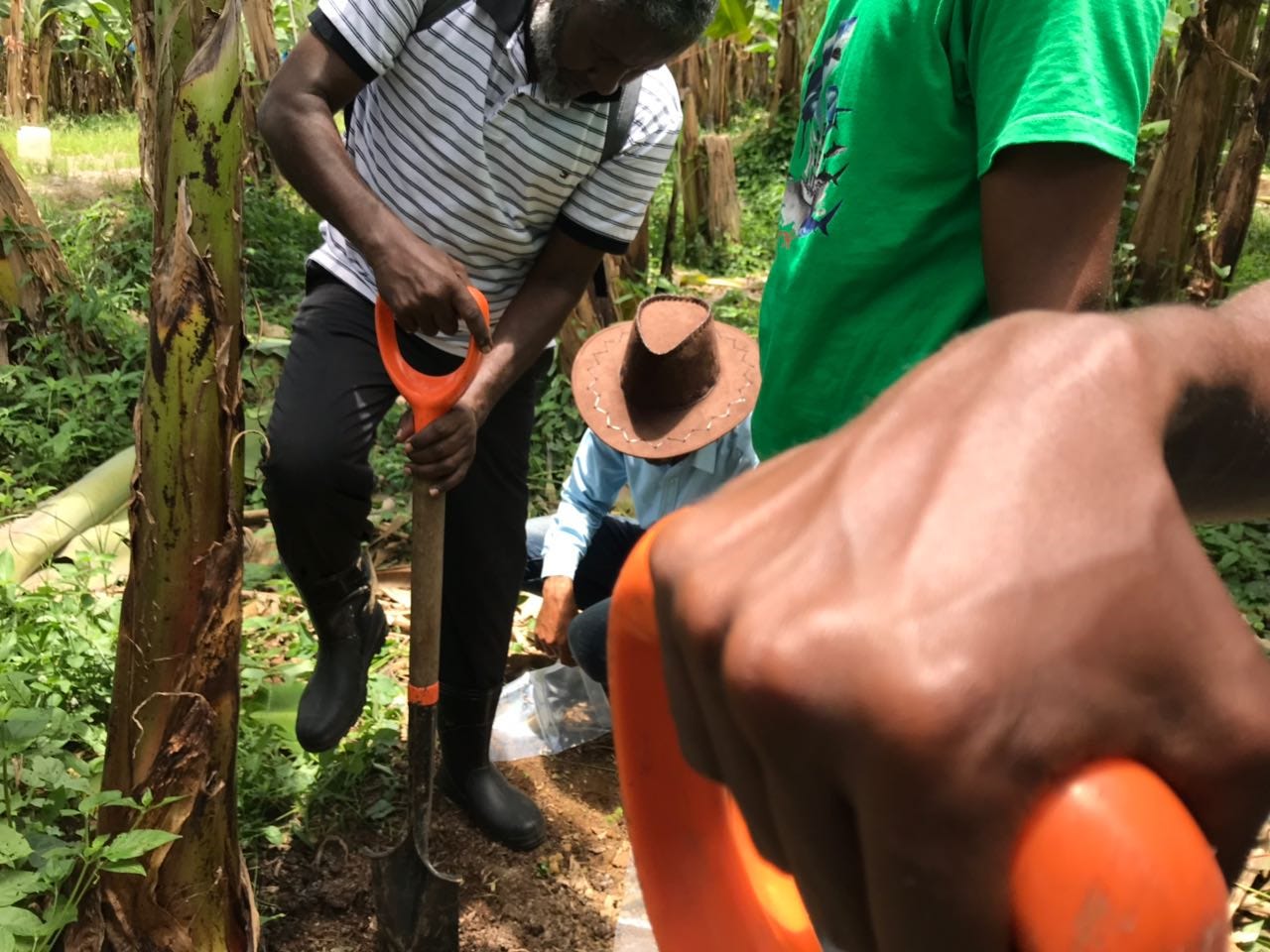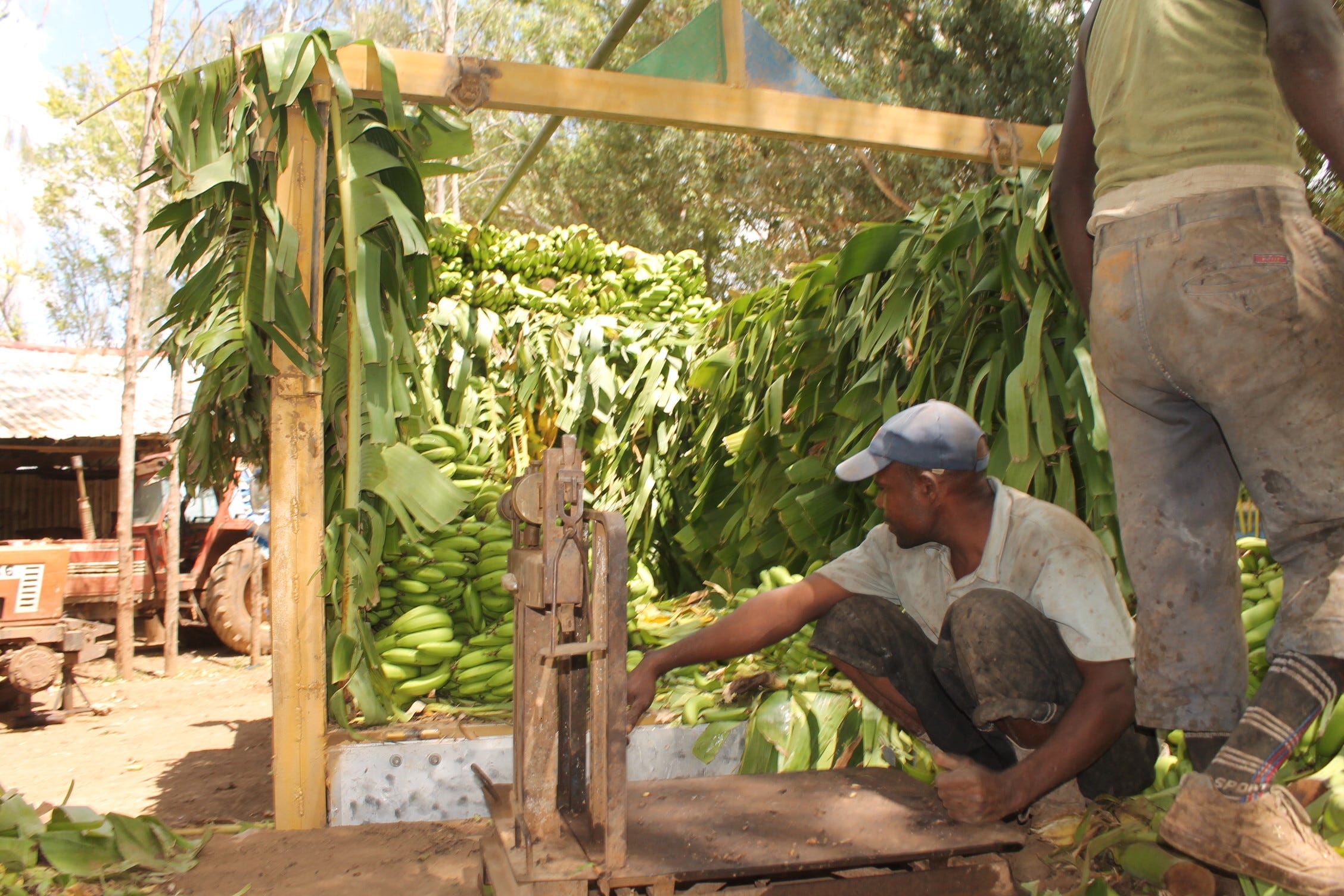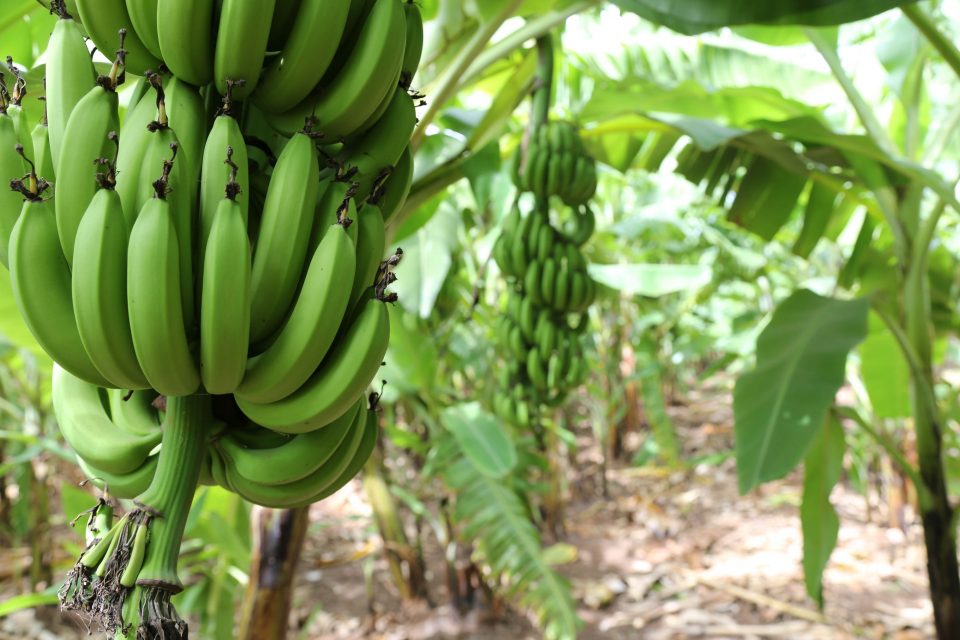Through the USAID/Somalia GEEL program, banana farmers in Afgooye, Somalia, have received training in crop management, pest control, and other best practices to increase their yields. Photo: USAID/Somalia GEEL Program
By Grace Tran, RTI International
Somalia was once a thriving banana hub for East Africa, with exports headed to Europe and the Middle East. Somali bananas were renowned for their taste — with a unique combination of extra sweetness and creamy texture, there was a high demand for the crop regionally. But with the onset of a two-decade civil war and subsequent “banana wars” — during which opposing warlords battled for control of the industry — banana production came to a screeching halt. Farms along Somalia’s Shebelle and Juba rivers were abandoned as villagers fled for refugee camps.

As the security situation has begun to normalize over recent years, people are returning to Somalia’s traditionally banana-farming areas and beginning to pick up the pieces. As part of a broader effort to spur private sector investment in Somalia, the USAID-funded Somalia Growth, Enterprise, Employment and Livelihoods (GEEL) program, implemented by RTI International, has been supporting the revitalization of the country’s banana sector by providing training that addresses gaps in production, post-harvest processing and storage, and infrastructure. Earlier this year, the project organized a two-month training in Costa Rica — the world’s second-largest banana exporter — which brought Somali banana farmers halfway across the world to learn how to improve their banana plantations. Somali banana farmers from 18 prominent agribusinesses flew from Mogadishu to San Jose to study at the Escuela de Agricultura de la Region Tropical Humeda (EARTH) University, an agricultural college focused on sustainable agriculture in tropical climates.
We caught up with one of the participants to hear about his experience and what he’s planning for his banana farm after the training.

Mohamed Said Abukar’s* family has been farming along Somalia’s Shebelle river for more than 70 years. His grandfather purchased the farm, land, and equipment back in the 1940s, and his family worked on the banana farm up until the beginning of Somalia’s civil war in the 1980s.
When the war broke out, he and nearly all of his extended family scattered; some went to the U.S., some went to Europe, but everyone fled Somalia save for one extended cousin who stayed behind to tend to the farm. Mohamed left for the U.K. and began a new life there as an accountant. Back home, his farm made it through the early 1990s, but with the ensuing banana wars the farm ended up on the wrong side of the conflict and became abandoned. In 2012, Mohamed came back to what remained and began the slow process of rebuilding.
“When I came back in 2012, there was nothing left — only a shell,” he says. “There were so many repairs. There were no machines. At first, I only had 15 hectares (37 acres) for bananas. But we began to operate again in 2015. Now we have almost 60 hectares (148 acres).”
Mohamed is one of many previously displaced Somalis investing back into their home country now that stability has begun to return, creating jobs for others in the process. So far, the GEEL project has helped more than 5,000 individuals receive short-term agricultural productivity training and provided technical assistance to over 5,000 micro-enterprises, which has helped create 1,386 new jobs.
Through a combination of hard work and assistance from efforts like GEEL, Mohamed has made significant progress. He excitedly talked about how he’d use what he had learned in Costa Rica back on his farm.
“I learned good packaging techniques which will help me bring better bananas to Mogadishu. The farm is located 109 kilometers south of Mogadishu, and because of security concerns, we have to take the back roads. The bananas are damaged before they even get to market there. But we have learned many things about packaging, operations, and logistics in Costa Rica.”

Now that he has acquired new skills, such as identifying potential pests and diseases and using better plantation management techniques, Mohamed has the ability to increase his banana yields, and therefore, his income. After the training, Mohamed shared that his long-term plan is to expand his farming to include cereals.
He also hopes to help revitalize the villages around his farm and share the techniques that he learned. Many of the villagers near his farm fled the area during the civil war; many are still internally displaced persons and do not have jobs. Through expanding his farm, Mohamed hopes to bring more people back to the region and sustain their livelihoods through farming.
“I hope to improve my ability to sell within the local markets here in Mogadishu,” Mohamed explains. “The Costa Rica training also gave me ideas about niche markets, and I want to expand into Puntland and Somaliland…and then eventually export to the Middle East!”
Farmers like Mohamed who left and are now returning are part of the migratory wave that is rebuilding Somalia’s banana industry. These banana farmers returning to Somalia face significant challenges, including broken infrastructure, irrigation canals in need of serious repair, and significant social unrest. Despite these challenges, banana farmers are looking to export again and bring the Somali banana industry back to life.

Through the GEEL program, USAID is supporting that revival. In addition to the banana training, GEEL is partnering with the private sector to set up Somalia’s first banana tissue culture and cold storage facilities. With a better understanding of good agricultural practices, operations, and logistics, Mohamed and his fellow farmers who traveled to Costa Rica are coming back with knowledge that they can pass on to other banana farmers, and across generations.

